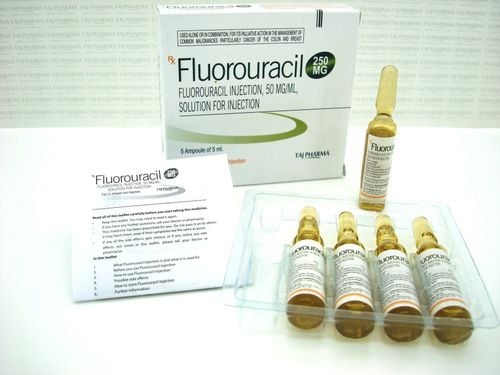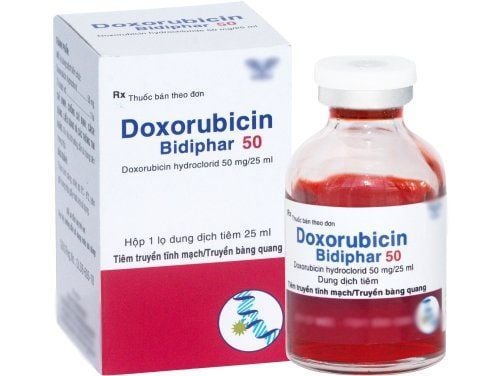This is an automatically translated article.
The article is professionally consulted by Master, Doctor Nguyen Thi Mai Anh - Doctor of Radiology - Department of Diagnostic Imaging and Nuclear Medicine - Vinmec Times City International Hospital
Wire needle positioning (also known as wire localization) is a procedure performed before breast cancer surgery to find out the abnormal position of the breast (Wire spotting) so that the surgeon knows exactly tissue to be removed. This procedure is done with a mammogram or ultrasound guidance. A thread-like wire is placed as close to the area to be operated on as possible. With the wire in place, the surgeon will know where to operate. The following article will clearly describe the advantages and disadvantages of locating the needle for breast surgery.
1. What is breast biopsy needle positioning?
Localized wire surgery is a technique used to remove an abnormal area of the breast that is visible on ultrasound or mammogram but cannot be felt clinically. A small wire (similar to a fuse or fishing line) is placed in the breast before surgery. This wire guides the surgeon to the correct area on the breast during surgery. Conductor in situ surgery can be done as a day surgery procedure or it can be part of a larger surgery for breast cancer.
The steps to perform a breast biopsy needle placement procedure are usually as follows:
The doctor will perform a mammogram or ultrasound to determine the exact location of the needle/wire. The patient's breast area will be cleaned with a cool antiseptic solution. In some cases, a doctor or nurse will inject a small amount of a local anesthetic to numb the skin before the needle is placed. Then, a thin needle is inserted into the breast, down to the area where other techniques need to be performed. Most women will feel some pressure when the locator needle comes into place. Therefore, let the technician know how you feel so they can adjust the direction and position of the needle to make the patient feel most comfortable.
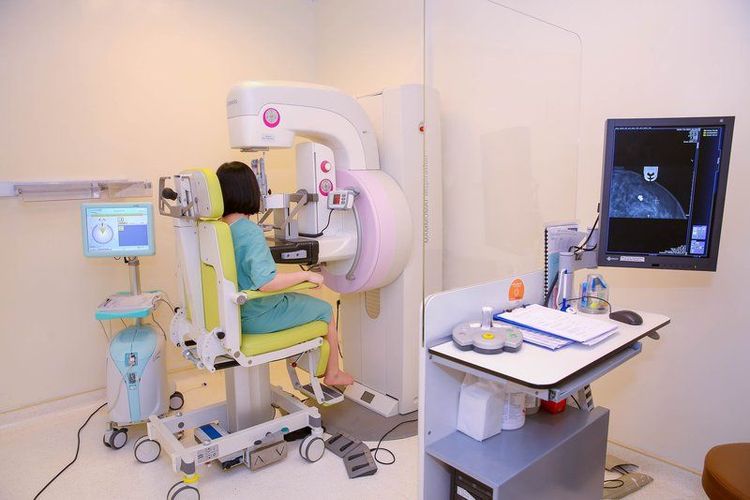
Người bệnh được chụp X-quang hoặc siêu âm tuyến vú để xác định vị trí chính xác của dây
Once the needle is in place, doctors may order another mammogram to check that the needle is in the correct position. The thin needle will be removed, leaving a thread-like thread that is hooked into place. The wire will help doctors perform surgery The wire is firmly fixed to the patient's skin so that it does not move out of place. Move the arm on the wired side as little as possible to limit the possibility of the cord being displaced to another location. Once the wire is in place, the patient will be transported to: Clinics for biopsies or to hospitals for surgery. Depending on the purpose of applying the needle positioning, the patient will be given local anesthesia (in the case of a biopsy) or general anesthesia (in the case of surgery). After the tissue around the cord is removed, it will be sent to both the X-ray room (to confirm the entire area has been removed) and the lab for examination.
2. Advantages when locating the needle for breast surgery
Positioning the wire needle in breast tumor surgery is a modern and newly applied technique. This method is less invasive and can minimize damage to adjacent healthy areas or parenchyma, thus potentially helping patients recover quickly after a biopsy or surgery.
The method of locating the wire needle in breast tumor surgery can be carried out in a short time, even the patient can be discharged the same day and resume normal activities after only one day.
Positioning the wire needle in breast tumor surgery applies local anesthetic technique, only local anesthesia and almost no scarring.
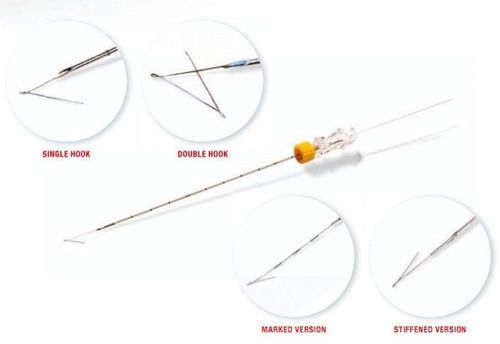
Định vị kim dây trong phẫu thuật u vú là một kỹ thuật hiện đại với nhiều ưu điểm nổi trội
3. Disadvantages of locating the needle for breast surgery
Almost all surgical procedures carry certain risks and complications. Fortunately, these are rare, and focal-guided breast surgery usually proceeds without any problems. Here are some of the main disadvantages of the wire needle positioning method in breast tumor surgery:
3.1. Missing area of abnormal tissue In about two percent of cases, an area of abnormal tissue is not found in a piece of tissue removed during surgery. There are several possible technical reasons for this.
3.2. Pain Most women don't have much pain after breast surgery using the needle placement method. However, in some cases, the pain can be greater and longer lasting. In that case, pain relievers such as paracetamol can be helpful and put the patient at ease.
If surgery is part of breast cancer treatment, you may need stronger pain relievers for the first few days. If the patient remains in the hospital during this time, the nurses and doctors will ensure that the patient's pain is well controlled and makes them as comfortable as possible.
In the case of day surgery, the patient will be provided with useful information on how to manage pain. Most women are advised to wear a comfortable, strapless support bra after surgery.
3.3. Wound problems Infection is a relatively common problem in patients undergoing surgery for breast cancer. If an infection develops, it can usually be treated with a course of antibiotics. Sometimes it is also necessary to combine two or more different antibiotics.
Bruising and bleeding - bruising is common after surgery and usually goes away on its own. Bleeding so much that urgent intervention is extremely rare.
Scars - some scarring is inevitable with any invasive technique performed on the body. Most breast biopsy wounds heal and do not cause major changes in the shape of the breast. However, if you are being treated for breast cancer, a larger portion of tissue may need to be removed and this will cause a change in the size and shape of the breast. The surgeon can give the patient information about the location of the scar and how large it is. Patients can also find more information about wound problems after breast surgery in the 'Wound Care' brochure.
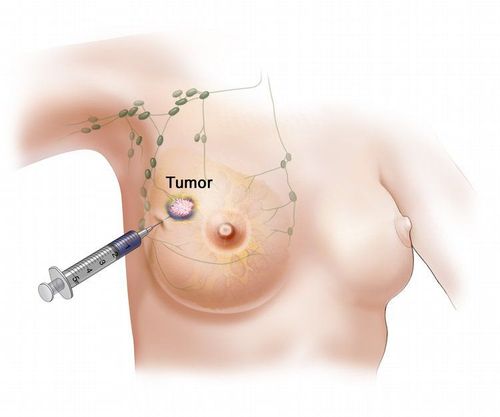
Phẫu thuật u vú có thể để lại một vài vết sẹo
3.4. More surgery or treatment is needed Even when the abnormal tissue is correctly removed, the pathologist can sometimes find cancer or other abnormal cells in the tissue. This means that a few more surgeries are needed to completely remove the area of abnormal tissue or cells.
If cancer cells are discovered unexpectedly, you may need to have some lymph nodes (glands) removed in your armpit for testing during a separate surgery
3.5. Side effects of the needle placement procedure in breast tumor surgery Usually the wire is inserted into the breast without any problems. The most common side effects were breast discomfort and bruising. Sometimes doctors are not satisfied with the position of the wire after the first placement so a second wire needs to be inserted.
Some patients find the procedure uncomfortable and there are even cases of fainting. An extremely rare side effect of guide wire insertion is atelectasis (pneumothorax).
3.6. General anesthetic side effects Fatigue and nausea after anesthesia are common and can often be corrected with rest and anti-nausea medication. Allergic reactions to anesthetics are generally possible but extremely rare. On the day of surgery, it is important for the patient to confirm where he or she needs to go on the day of the operation. Sometimes the patient will be asked to go directly to the breast imaging center and have a guide placed before going to the hospital admissions area.
Different arrangements need to be made in different hospitals. Double check this the day before the procedure. It is very important that patients bring recent mammograms and ultrasound images with them on the day of surgery if the surgeon or radiologist does not keep them for the patient.

Thuốc gây mê toàn thân có thể gây ra tình trạng mệt mỏi và buồn nôn
Positioning the wire needle in breast tumor surgery is a new method that appears and promises to bring new advances in breast tumor surgery. The optimal point of this method is that it is less invasive and minimizes damage to the healthy tissue around the breast. In addition, locating the wire needle in breast tumor surgery is also a relatively easy technique to perform and usually, the patient can be discharged from the hospital and resume normal activities one day later. However, this technique can also make the patient feel a little uncomfortable, painful or under the influence of the anesthetic during the procedure.
At Vinmec International General Hospital, there is a Breast Cancer Screening Package, which helps customers screen and detect breast cancer early even when there are no symptoms. When registering for the Breast Cancer Screening Package, customers will receive:
Examination and consultation with an oncologist. Breast cancer screening with bilateral breast ultrasound and mammogram. Up to now, Vinmec has become a prestigious address in breast cancer screening with:
Team of highly qualified and experienced doctors. Comprehensive professional cooperation with domestic and international hospitals: Singapore, Japan, USA, etc. Comprehensive treatment and care for patients, multi-specialty coordination towards individualizing each patient. There is a full range of specialized facilities to diagnose the disease and stage it before treatment: Endoscopy, CT scan, PET-CT scan, MRI, histopathological diagnosis, genetic test - cytology, Biopsy ... There are full range of mainstream cancer treatment methods: surgery, radiation therapy, chemotherapy, stem cell transplant...
Please dial HOTLINE for more information or register for an appointment HERE. Download MyVinmec app to make appointments faster and to manage your bookings easily.








